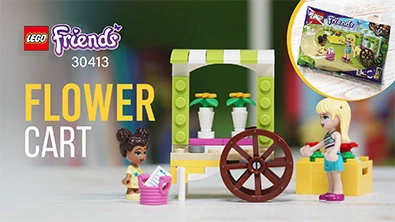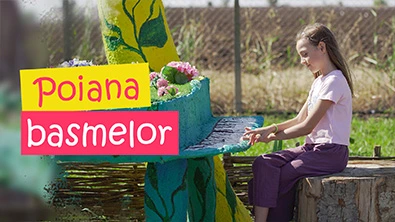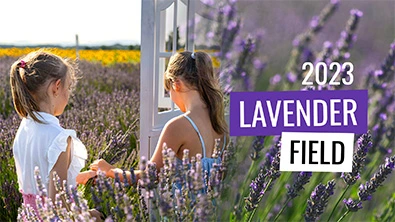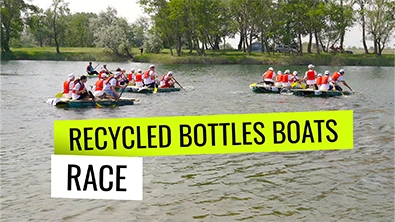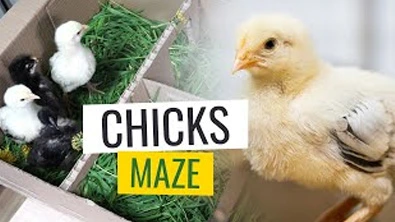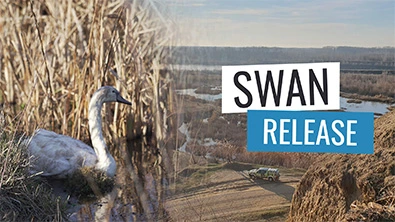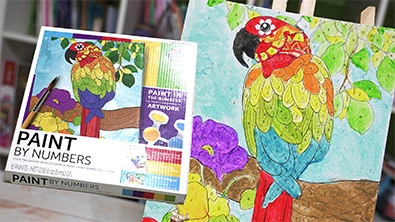What can a child learn from being involved in a wild animal rehabilitation center
A wildlife rehabilitation center is an organization or institution dedicated to receiving, treating, and rehabilitating injured, sick, or orphaned wild animals with the goal of restoring them to the health and abilities necessary to be released back into their natural environment.
These centers specialize in providing medical care, proper nutrition and temporary shelter for wildlife in distress. The team of specialists, including veterinarians, biologists and animal caretakers, work collaboratively to assess the animals’ health and develop an individualized treatment and recovery plan.
In a rehabilitation center, wild animals receive proper care and constant monitoring of their progress. This may include medication, physical therapy, training to develop survival skills, and adaptation to their natural environment.
As the animals recover and become able to survive in the wild, they are prepared for release. The rehabilitation center works with local authorities and specialists to ensure the release into a suitable and safe habitat.
The Wildlife Rehabilitation Center plays an essential role in species conservation and the promotion of wildlife welfare. Through the treatment and recovery of vulnerable animals, these centers contribute to maintaining biodiversity and restoring the natural balance of ecosystems.
A child’s involvement in a wildlife rehabilitation center can provide many opportunities for learning and development. Here are some things a child can learn from this experience:
- Empathy and Compassion: Working with wildlife in need can help a child develop empathy and compassion for other living things. By observing the struggle and suffering of animals and contributing to their care and recovery, the child can learn to feel and understand the emotions and needs of other beings.
- Responsibility and care: Involvement in wildlife rehabilitation requires taking responsibility for their care. The child can learn to be responsible and take on specific tasks such as feeding, cleaning and monitoring the health of the animals. This can develop time management, organization and decision-making skills in the child.
- Knowledge about animals and their habitat: Working in a wildlife rehabilitation center can give a child the opportunity to learn about different species of animals and their natural habitat. The child can understand the specific needs of each species, their behavior and adaptations to the environment.
- Importance of nature conservation and animal protection: Involvement in wildlife rehabilitation can help a child understand the importance of environmental conservation and animal protection. By directly observing the consequences of human activities on wild animals and participating in efforts to recover and release them, the child can develop a sense of responsibility and the need to protect biodiversity.
- Understanding nature and conserving the environment: Children can learn about different species of wild animals, their habitat and the importance of conserving them. This experience can sensitize them and help them develop a deep respect for nature and the ecosystems in which wild animals live.
- Responsibility and care for other living things: Involvement in wildlife rehabilitation can give children the opportunity to learn about responsibility for other beings and the importance of caring for them. By actively participating in the activities of feeding, cleaning and nursing the animals, children can develop empathy and care for other living things.
- Learning about the life cycle and adaptations of animals: Children can better understand the life cycle and adaptations of wild animals by directly observing and interacting with them in a protected environment. They can learn about the specific needs and behaviors of each species and gain valuable knowledge about how ecosystems work.
- Developing social skills and teamwork: Being involved in a wildlife rehabilitation center can involve working with other volunteers and specialist staff. This experience can give children the opportunity to develop social, communication and teamwork skills. In addition, they can learn to respect and listen to the directions of others and work together to care for recovering animals.
- Practical and communication skills: Involvement in a wildlife rehabilitation center can help develop practical skills such as proper animal feeding, cleaning and first aid administration. The child can also learn to communicate effectively with other volunteers and specialized staff, receive instructions and work as a team to achieve common goals.
- Improving self-confidence and self-esteem: Actively contributing to the recovery and release of wild animals can be a rewarding experience and can help build confidence and self-esteem in children. Seeing the progress of the animals and knowing that they have had a positive impact on their lives can build children’s confidence and motivation to get involved in activities with a positive impact in the community.
These experiences can have a significant impact on the child’s socio-emotional development and understanding of his relationship with nature and animals.
Volunteering at a wildlife rehabilitation center can help a child later understand when a wild animal needs help and how appropriate assistance can be provided.
Through the direct experience and training received in such a center, the child can learn about the signs and behaviors that indicate a state of distress or need of a wild animal. He can learn to identify injured, weakened or traumatized animals and recognize symptoms of health problems.
The child can also learn about specific species and their natural needs. This can help them understand if a wild animal is in a situation where human intervention is needed, or if it is in a state where it can survive and fend for itself in its natural environment.
In addition, volunteering at a rehabilitation center can help the child understand the importance of contacting and consulting with specialists and responsible authorities to make informed decisions about assisting and saving wild animals.
Therefore, volunteering at a rehabilitation center can develop a child’s observation, understanding and decision-making skills regarding the needs of wild animals and the ability to provide appropriate help when needed.
Knowing about wild animals can help us better understand the concept of freedom.
By observing wild animals in their natural habitat and learning about their behavior, we can gain a deeper insight into what freedom means to them.
Wild animals live in natural environments where they can express their natural behaviors, move freely, forage for food, and meet their physiological and behavioral needs. They are adapted to their environment and have a complex set of specific needs. By observing how wild animals move, interact with their environment, and exercise their natural behaviors, we can understand that freedom means being able to live their lives naturally and fulfill their essential needs.
On the other hand, when wild animals are captive or restricted in a limited space, they no longer have the same freedom to express their natural behaviors and satisfy their needs. They may be subject to stress, frustration and may have difficulty adapting to the environment. Thus, knowledge of wild animals can help us understand the importance of ensuring adequate conditions of freedom and well-being for them.
In addition, learning about wild animals and the ecosystems in which they live can also contribute to understanding the interconnectedness of all living things and the importance of maintaining natural balance. The freedom of wild animals is closely related to the maintenance of their natural habitats and the conservation of biodiversity as a whole.
Therefore, knowing about wild animals can help us understand that their freedom is essential for their health and well-being and can contribute to the awareness of the importance of protecting and conserving their environment to give them the opportunity to live in a natural and free way.
There is a strong connection between respecting the freedom of wild animals and respecting the right to freedom of humans. Learning to respect the freedom of wild animals can help develop a mindset and fundamental values that extend to respect for human rights and freedoms. Here’s how this process can happen:
- Empathy and understanding of the rights of other beings: By learning and experiencing respect for the freedom of wild animals, a child can develop empathy and the understanding that all beings, whether human or animal, have rights and freedoms. By understanding the needs, desires and natural behaviors of wild animals and learning to respect them, the child can develop a deeper understanding of the rights and freedoms of all beings.
- Ethical values and social responsibility: Learning to respect the freedom of wild animals can help develop ethical values such as justice, equity and social responsibility. These values can then be extended to respect for people’s rights and freedoms and a commitment to a fairer and freer society.
- Awareness of interconnectedness and rights: Understanding the interconnectedness of all beings and the environment can help us understand that freedom and rights are essential to maintaining global balance and well-being. If a child learns to appreciate the importance of wildlife freedom in the ecosystem and society, he can apply the same awareness to freedom and human rights.
- Cultivating respect and valuing diversity: Respect for the freedom of wild animals can help develop an attitude of appreciation and respect for diversity in general. The child can understand that every being has the right to freedom and the expression of his individuality, regardless of species or origin. This value can also be extended to respecting the freedom and rights of people regardless of cultural, racial, religious or other differences.
It is important to emphasize that continued education and influence are essential for these values to be cultivated and developed in a conscious and coherent way. By promoting respect for animal freedom
Time spent in a wildlife rehabilitation center can be extremely valuable and beneficial to the parent-child relationship as well as the child’s personal and educational development.
Working in a wildlife rehabilitation center can be an ideal parent-child bonding experience. This provides numerous benefits and opportunities for learning and interaction. Here are some reasons why this activity can be considered ideal:
- Education and Awareness: Participating in activities at a wildlife rehabilitation center provides the opportunity to learn about the importance of conserving wildlife and the environment. Parents can explore with children different species of wild animals, their habitat and the problems they face. This can help children develop an attitude of responsibility towards nature and develop their ecological awareness.
- Emotional Bond: Interacting with wild animals in the rehabilitation center can create a strong emotional bond between parents and children. Sharing the experiences of seeing and interacting with and supporting vulnerable animals can strengthen the family relationship and create precious memories.
- Experiential Learning: Active participation in the activities of a rehabilitation center provides an opportunity for children to learn through experience. They can observe and understand the process of care and recovery of wild animals, as well as the efforts made to reintegrate them into the natural environment. This kind of hands-on learning helps children develop empathy, care and responsibility towards other beings.
- Improving knowledge and skills: Activities in a rehabilitation center can help improve children’s knowledge and skills in biology, nature conservation and animal care. These experiences can stimulate curiosity and a desire to learn more about the natural world.
- Active involvement and volunteering: Parents can encourage active involvement and volunteering at a wildlife rehabilitation center. This gives children the opportunity to contribute to the good of the community and feel useful in supporting animals in need. Also involvement in volunteering
Participating in activities at a rehabilitation center can help children appreciate the beauty and diversity of nature. These experiences can spark an interest in exploring and discovering more aspects of nature. It can stimulate them to explore and understand more about nature and different habitats and ecosystems. By getting involved in a wildlife rehabilitation center, children can develop a strong passion and desire to explore and protect nature, which can have significant benefits for their personal development and their relationship with the environment.
Wildlife Rehabilitation Centre – ACDB
Every day, wild animals are injured and even killed because of the impact of human activities. Some of injured animals arrive at the Wildlife Rehabilitation Center – ACDB from Petrești, a place where we are trying to keep them alive, improve their physical integrity and ability to survive, and reintroduce them into natural habitats. The Wildlife Rehabilitation Center was established by ACDB in 2007 on the site of the former Zoo in Petrești, a few kilometers from Focsani. It is the first authorized center in Romania and is specialized in treating and rehabilitating several species of wild animals in difficulty.
At the Wildlife Rehabilitation Center, injured animals arrive because of dramatic situations that endanger their lives. Veterinarians, biologists and volunteers sometimes perform miracles: to restore the locomotor capacity of a bear cub with the amputated paw by a train, to feed two orphaned lynx cubs, to feed at every two hours a newborn deer, or remove the shots (pellets) from the wing of a shot bird. The Wildlife Rehabilitation Center froom Focșani, is one of the most efficient places where a wild animal can be rehabilitated.
Professional staff (veterinarians, biologists, wildlife specialists, etc.) as well volunteers dedicate passionately they free time for the center activities. They are involved in daily management and maintenance activities, so that from one month to another we manage to improve the survival and rehabilitation rate for wildlife. We strongly believe that, together, we can improve the life-saving process of endangered animals!
The Wildlife Rehabilitation Center is authorized for the rehabilitation of wildlife at national level. However, the operational procedures for rapid intervention in certain serious cases, and the intervention time required for traveling over very long distances is a factor to be taken into account in assuming some cases. In this context, for operationality, the Center will prioritize the interventions at regional level and the cases located near other rehabilitation centers will be directed to them.



